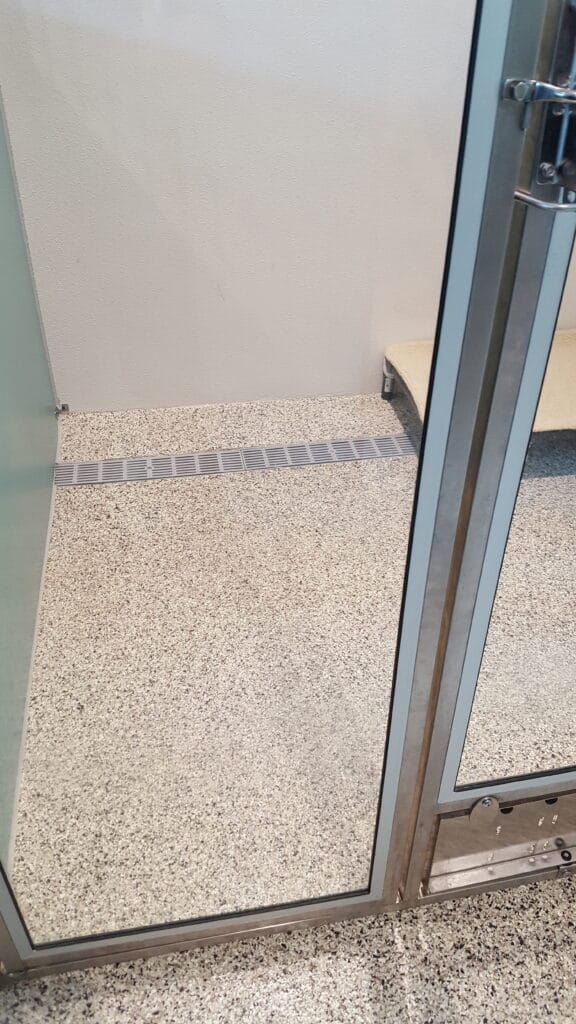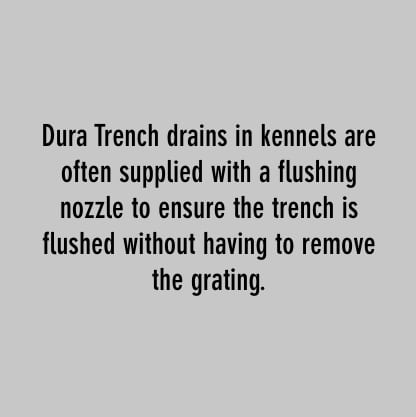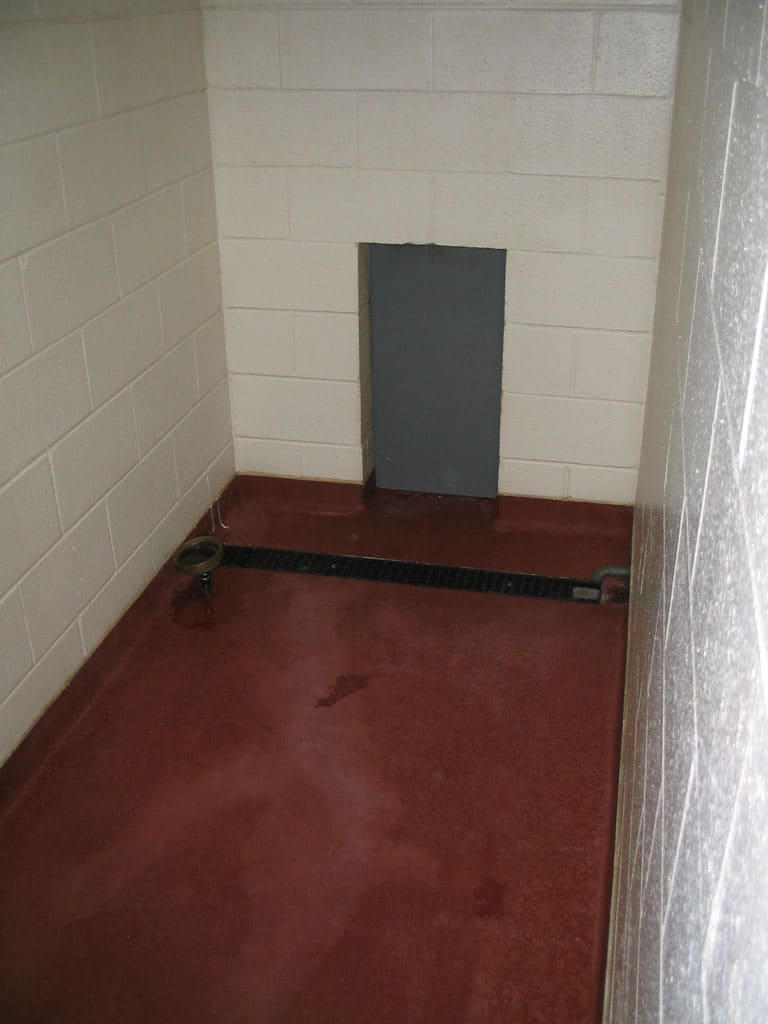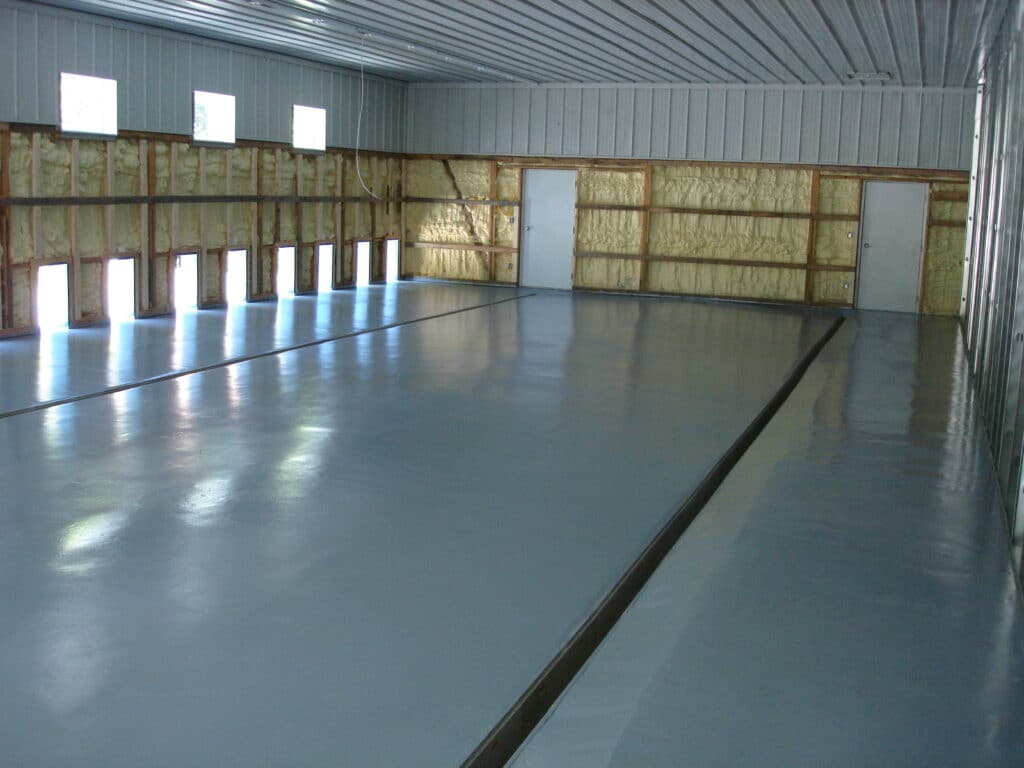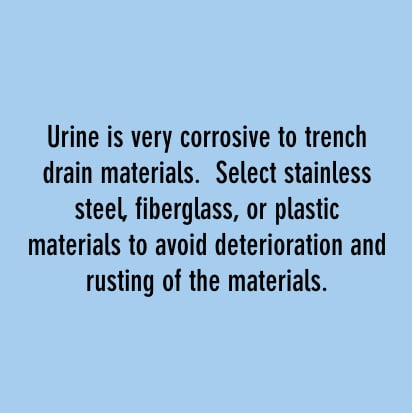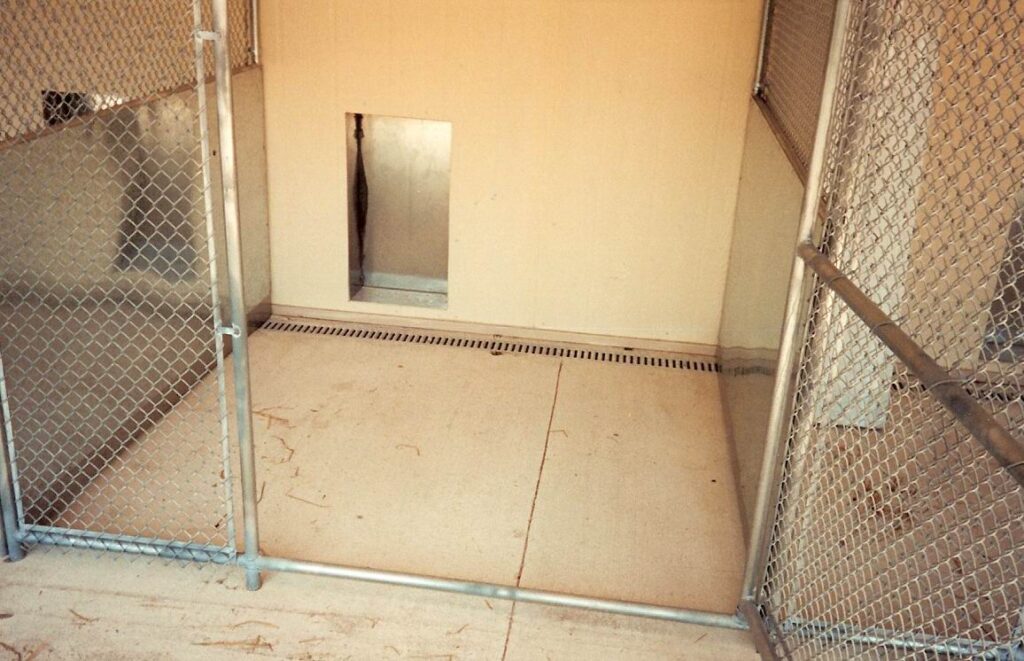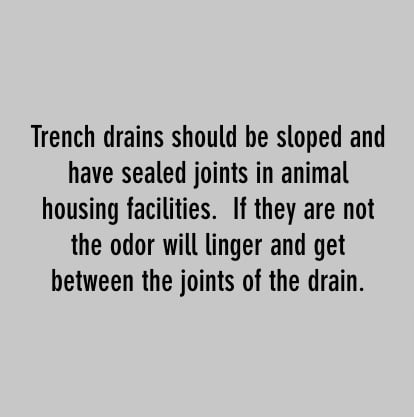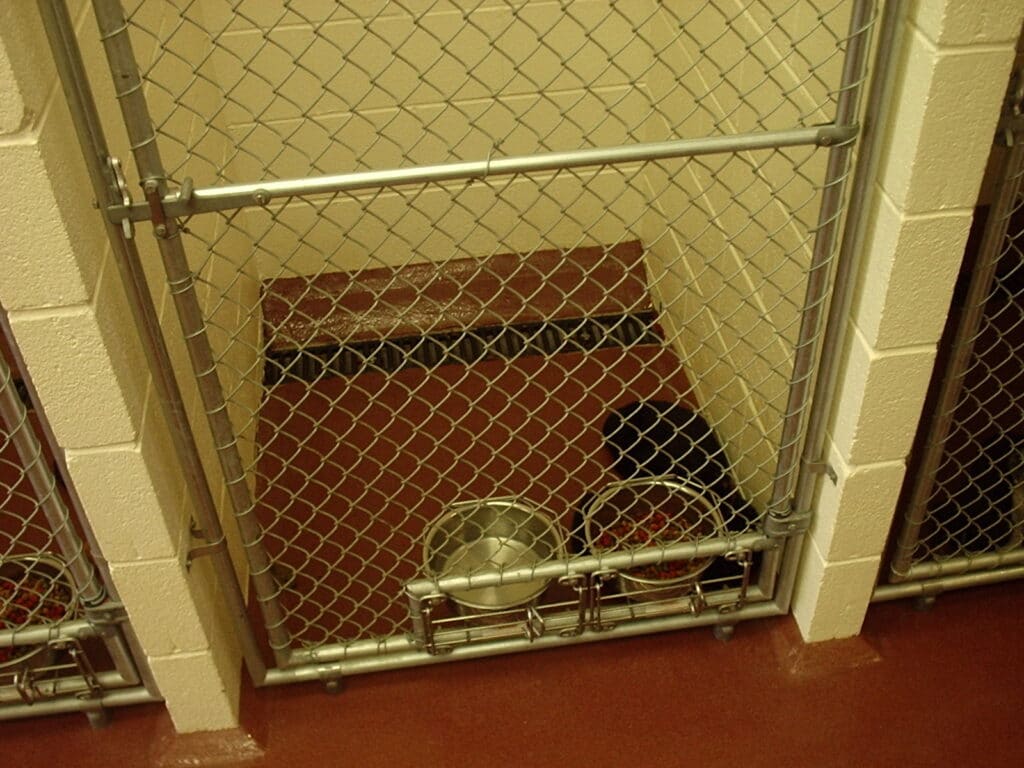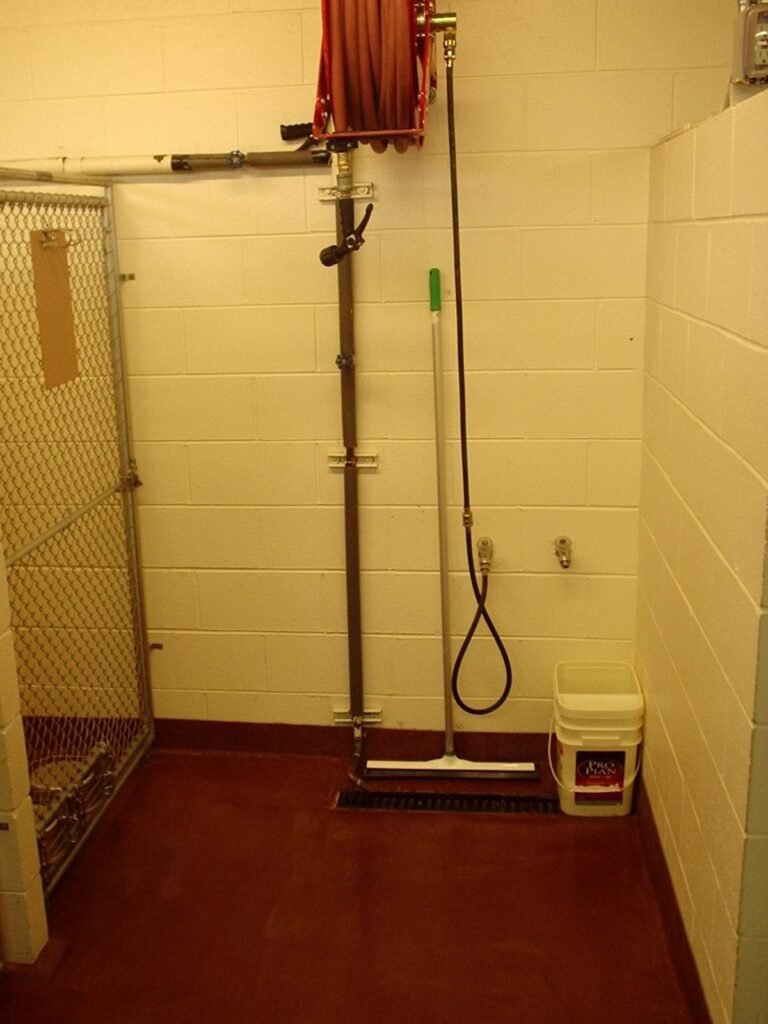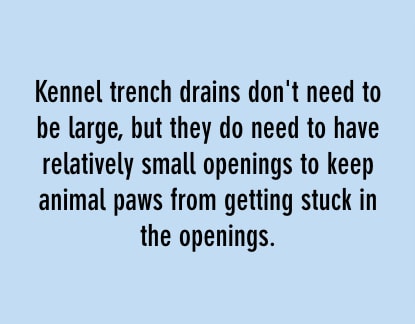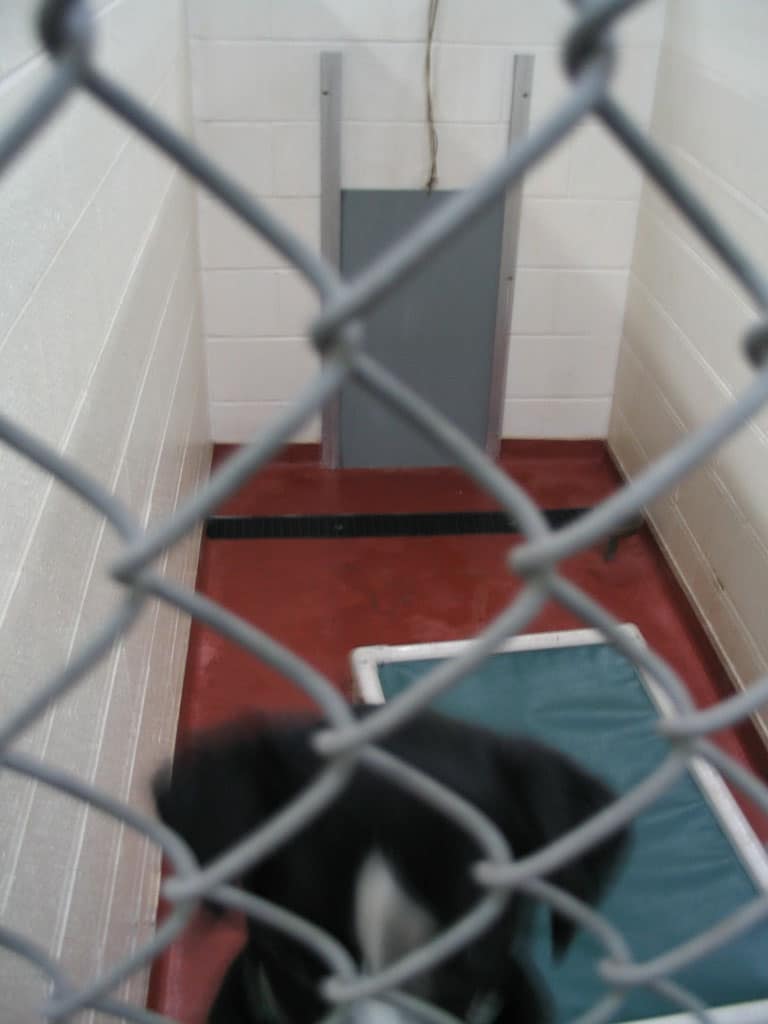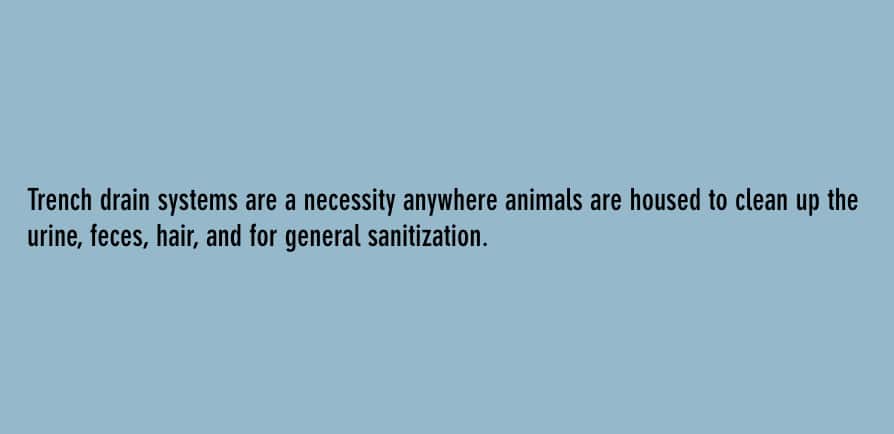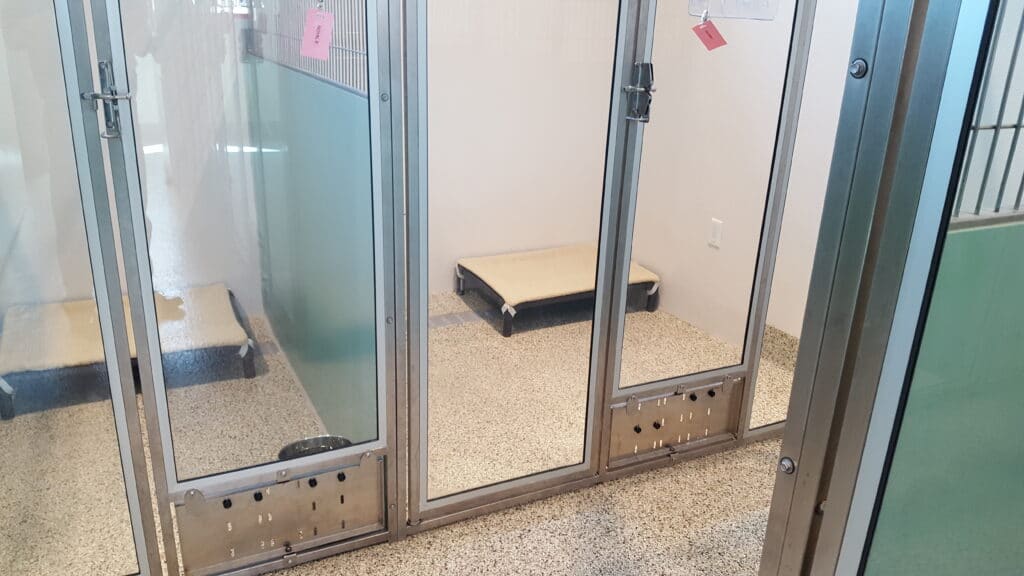Veterinary clinics and Animal Hospitals require trench drain systems for the cleaning of the animals pens or kennels. For both interior and exterior kennels, the accepted method is to place a trench drain at the front or back of the pens to wash urine and fecal matter into. The best method is to cast a trench drain into the concrete slab, however, you can purchase cages with a trench drain built into a raised floor.
When casting a trench drain system into the concrete it is best to design the kennel area so that the cages can be washed from the isle to the back of the kennel. This requires putting the trench drain at the back of the cages. This allows the staff to wash the hair, urine, and fecal matter to the trench drain while rolling their cleaning supplies and hose down the isle. The staff will not get nearly as wet with this design as a layout where they have to enter the cages and try to spray the floors to the center isle. If your layout will require a grate, you should select a grate that can handle the exposure to urine and will not allow the animal paws to pass through but as large an opening as possible to reduce the cleaning frequency.
During design, plan on placing a flush valve at the shallow end of the trench drain with a wall mounted valve for flushing the trench. This will aid in keeping the trench drain and underground piping system flowing clean with minimal maintenance.
Trench drains in animal areas should have hair strainers at the outlet to minimize pipe maintenance. For trench drains in a grooming area you should consider a larger catch basin with a trash bucket to keep hair from getting into the system.
Demand a minimum of 3″ pipe or preferably 4″ pipe diameter for drain lines that will see fecal matter or hair. Smaller sizes can plug. Be sure all trench drain joints are sealed water tight too keep the slab from getting infused with urine. Concrete is porous and will absorb urine and hold the smell and it will be difficult if not impossible to get rid of the smell.

